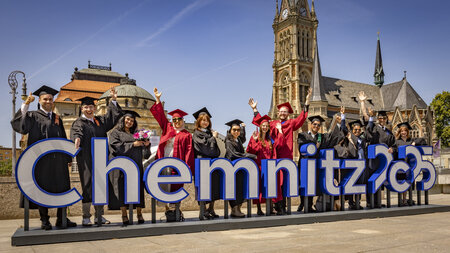Klassische Renderverfahren basieren auf üblicherweise texturierten 3D-Modellen. Zum Erzeugen eines solchen Modells als Abbild realer Objekte gibt es verschiedene Ansätze. Klassischerweise wird hierfür jedoch Photogrammetrie eingesetzt. Dabei werden eine Menge an Fotos des Objekts aus unterschiedlichen Perspektiven aufgenommen, aus welchen anschließend zunächst eine Punktwolke, später ein 3D-Modell errechnet werden kann. Dabei treten jedoch verschiedene Probleme auf. Normalerweise sind die somit erzeugten Modelle sehr dicht aufgelöst und die Qualität der Rekonstruktion hängt stark von der zu rekonstruierenden Geometrie ab. Legt man ein solches Modell über eine reale Kameraperspektive, werden die Unterschiede schnell deutlich.
In den letzten Jahren haben sich alternative Ansätze etabliert. Diese setzen vom Prinzip her an der eigentlichen Wiedergabe der Modelle an. Anstatt ein texturiertes 3D-Modell, wird bei diesen Ansätzen ein sogenanntes Radiance Field zur Bildsynthese verwendet. Beispiele für solche Verfahren sind 3D Gaussian Splatting [1] und Sparse Voxel Rasterization [2].
Im Rahmen eines Forschungspraktikums oder einer Abschlussarbeit wollen wir an der Professur Graphische Datenverarbeitung und Visualisierung untersuchen, inwiefern sich diese Ansätze für die Wiedergabe dreidimensionaler Umgebungen in stereoskopischer Virtual Reality eignen. Hierbei soll ein Arbeitsablauf entstehen, bei ein Radiance Field aus einer Menge an Bildern aufgenommen errechnet wird, um anschließend in einer VR-Anwendung dargestellt zu werden. Idealerweise soll die Aufnahme der Bilder dabei direkt in die Anwendung integriert werden.
[1] https://repo-sam.inria.fr/fungraph/3d-gaussian-splatting/
[2] https://svraster.github.io/
- Gute Programmierkenntnisse
- Hilfreich sind Kenntnisse aus den Lehrveranstaltungen Virtual Reality, sowie Computergraphik 1 und 2.
Mittels virtueller Augmentierungen ist es möglich, die wahrgenommene Realität visuell zu erweitern. In der Regel beschränkt sich diese Erweiterung auf nicht-belebte Objekte oder nicht-menschliche Avatare. Jedoch ermöglichen Tiefenkameras die Erfassung von Körpern und deren Bewegungen. Ziel des Praktikums ist es, eine Tiefenkamera (Microsoft Kinect) mit einer stereoskopischen Augmented Reality (basierend auf HTC Vive) Anwendung zu koppeln, so dass die von der Kamera aufgenommene Person als Abbild in der Augmentierten Realität erscheint. Dadurch ergeben sich verschiedene Einsatzszenarien. Beispielsweise muss sich die aufgenommene Person nicht zwangsläufig am gleichen Ort befinden, wodurch ein AR Chatraum erzeugt werden kann. Alternativ können wir auf diese Art ein virtuelles Hologramm von uns selbst erstellen. Beide Szenarien sollen im Rahmen des Praktikums untersucht werden. Die notwendige Technik wird dabei von uns zur Verfügung gestellt.
Klassische Renderverfahren basieren auf üblicherweise texturierten 3D-Modellen. Zum Erzeugen eines solchen Modells als Abbild realer Objekte gibt es verschiedene Ansätze. Klassischerweise wird hierfür jedoch Photogrammetrie eingesetzt. Dabei werden eine Menge an Fotos des Objekts aus unterschiedlichen Perspektiven aufgenommen, aus welchen anschließend zunächst eine Punktwolke, später ein 3D-Modell errechnet werden kann. Dabei treten jedoch verschiedene Probleme auf. Normalerweise sind die somit erzeugten Modelle sehr dicht aufgelöst und die Qualität der Rekonstruktion hängt stark von der zu rekonstruierenden Geometrie ab. Legt man ein solches Modell über eine reale Kameraperspektive, werden die Unterschiede schnell deutlich.
In den letzten Jahren haben sich alternative Ansätze etabliert. Diese setzen vom Prinzip her an der eigentlichen Wiedergabe der Modelle an. Anstatt ein texturiertes 3D-Modell, wird bei diesen Ansätzen ein sogenanntes Radiance Field zur Bildsynthese verwendet. Beispiele für solche Verfahren sind 3D Gaussian Splatting [1] und Sparse Voxel Rasterization [2].
Im Rahmen eines Forschungspraktikums oder einer Abschlussarbeit wollen wir an der Professur Graphische Datenverarbeitung und Visualisierung untersuchen, inwiefern sich diese Ansätze für die Wiedergabe dreidimensionaler Umgebungen in stereoskopischer Virtual Reality eignen. Hierbei soll ein Arbeitsablauf entstehen, bei ein Radiance Field aus einer Menge an Bildern aufgenommen errechnet wird, um anschließend in einer VR-Anwendung dargestellt zu werden. Idealerweise soll die Aufnahme der Bilder dabei direkt in die Anwendung integriert werden.
[1] https://repo-sam.inria.fr/fungraph/3d-gaussian-splatting/
[2] https://svraster.github.io/
- Gute Programmierkenntnisse
- Hilfreich sind Kenntnisse aus den Lehrveranstaltungen Virtual Reality, sowie Computergraphik 1 und 2.
Klassische Renderverfahren basieren auf üblicherweise texturierten 3D-Modellen. Zum Erzeugen eines solchen Modells als Abbild realer Objekte gibt es verschiedene Ansätze. Klassischerweise wird hierfür jedoch Photogrammetrie eingesetzt. Dabei werden eine Menge an Fotos des Objekts aus unterschiedlichen Perspektiven aufgenommen, aus welchen anschließend zunächst eine Punktwolke, später ein 3D-Modell errechnet werden kann. Dabei treten jedoch verschiedene Probleme auf. Normalerweise sind die somit erzeugten Modelle sehr dicht aufgelöst und die Qualität der Rekonstruktion hängt stark von der zu rekonstruierenden Geometrie ab. Legt man ein solches Modell über eine reale Kameraperspektive, werden die Unterschiede schnell deutlich.
In den letzten Jahren haben sich alternative Ansätze etabliert. Diese setzen vom Prinzip her an der eigentlichen Wiedergabe der Modelle an. Anstatt ein texturiertes 3D-Modell, wird bei diesen Ansätzen ein sogenanntes Radiance Field zur Bildsynthese verwendet. Beispiele für solche Verfahren sind 3D Gaussian Splatting [1] und Sparse Voxel Rasterization [2].
Im Rahmen eines Forschungspraktikums oder einer Abschlussarbeit wollen wir an der Professur Graphische Datenverarbeitung und Visualisierung untersuchen, inwiefern sich diese Ansätze für die Wiedergabe dreidimensionaler Umgebungen in stereoskopischer Virtual Reality eignen. Hierbei soll ein Arbeitsablauf entstehen, bei ein Radiance Field aus einer Menge an Bildern aufgenommen errechnet wird, um anschließend in einer VR-Anwendung dargestellt zu werden. Idealerweise soll die Aufnahme der Bilder dabei direkt in die Anwendung integriert werden.
[1] https://repo-sam.inria.fr/fungraph/3d-gaussian-splatting/
[2] https://svraster.github.io/
- Gute Programmierkenntnisse
- Hilfreich sind Kenntnisse aus den Lehrveranstaltungen Virtual Reality, sowie Computergraphik 1 und 2.





